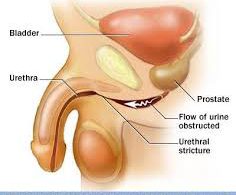
INTRODUCTION: In Present era of Medical science like Modern Medicine our Homoeopathic System is enthusiastically welcome the new developments and techniques in Research Methodology. In vitro Studies with homeopathic medicines are Proof for Research Development in Homoeopathy. Qualitative research is mainly focuses on matter related with Social Science i.e. Human nature and its external environment. So, let’s Explore Relationship between Qualitative Research method and Homoeopathy.
KEYWORDS: Qualitative Research, Homoeopathy, Case taking
1) Qualitative research is designed to explore the human elements of a given topic, where specific methods are used to examine how individual see and experience the world. Homeopathic case taking is first gate to unlock the sickness and here aim of case taking is to understand the patient not only pathological or organic changes of diseases. Homeopathic case taking also involved with the examination of an individual. i.e. how one sees and experiences the world. In aph. 94 of Organon of medicine, “While inquiring into the state of chronic diseases, the particular circumstances of the patient with regard to his ordinary occupations, his usual mode of living and diet, his domestic situation, and so forth, must be well considered and scrutinized, to ascertain what there is in them that may tend to produce or to maintain disease, in order that by their removal the recovery may be promoted.”
2) Constructive and interpretive qualities of Researcher: “The constructivist or interpretivist believes that to understand this world of meaning one must interpret it, so the constructivist or interpretivist does not take thing at face value, the constructivist or interpretivst situates whatever is being studied in the context interprets it within that context. The inquirer must elucidate the process of meaning construction and clarify what and how meanings are embodied in the language and actions of social actors.” In Homoeopathy one has to understand the meaning of symptoms in their whole extent. Patient’s language(local language) and proving symptoms or reportorial rubrics are different in their presentation (although their meaning is similar)and due to their different presentation one has to play the role of constructivist and interpretivist in Homoeopathy.(many doctors are not believe in interpretation)
3) Active listening: Active listening describes the set of techniques designed to focus attention of the interviewer or observer on the speaker. The goal of active listening is to accurately hearing and interpreting the speaker’s verbal and non verbal communication. Active listening demands understanding instead of judging. The aim of researcher is to receive the data without being critical regarding it. Neutral probes are allowed whenever it required. In our Homeopathic case taking, noting down of symptoms is not enough but this active listening is important. To find the characteristic symptoms in case one must be skillful in understanding of verbal and non verbal symptoms. (To find objective and subjective symptoms properly).A physician should be able to focus his full attention on observing facts and the phenomenon of disease. A true observation cannot be done without proper attention. While taking case, he should concentrate on observing the patient alone. In Aph. 89 Dr. Hahnemann mentioned that “when physician has finished writing down these Particulars, he then makes a note of what he observe in patient” and this could possible only if one is skillful in observing during case taking.
4) Qualitative research more concerned with the question “Why”. Here to find the answer of this question, one must to explore the things/ matter in descriptive form (not in mere numerical data). In homeopathic case taking, mere number of symptoms or disease condition is not enough to prescribe the remedy. Physician must have “Why” questions in his mind to understand the origin and character of symptoms in given case.
5) Among the characteristics of Qualitative researcher, ability and willingness to read a lot and understand the connection between phenomena. In Homoeopathy, one has to read a lot of Literature about the concepts of Homoeopathy and must have ability to connect them with Practical Aspect of Homoeopathy.
6) Case study in qualitative research is an in depth inquiry into a site to particular phenomenon or circumstances. Here they take a piece of a circumstances and explore it in different angles. Homeopathic Physician applies same attitude to inquire about the past history and family history. By exploring that part of case we can understand the case in better way with its origin and development of sickness.
CONCLUSION: Homeopathic case taking is not a simple interview of sick person but purposive scientific techniques to find out the reason behind the sickness. Quantity related with objectivity while quality related with subjectivity and homeopathic Physician deals with both during case taking. So, Our Homeopathic Case taking is one type of small qualitative research that you are doing at your consulting table with every patient.
REFERENCES:
1) Boericke W., Organon of Medicine; 6th edition; Delhi; B. Jain Publisher(P) Ltd
2) Lisa M. Given, The sage Encyclopedia of Qualitative research methods (vol-1& 2); California; Sage Publication.
3) Qualitative research methods, lectures from NPTEL online forum.
4) Tiwari. S, Essential of repertorization (A Comprehensive textbook of Case taking and Repertorization); fifth edition; Delhi; B. Jain Publishers (P) Ltd.





